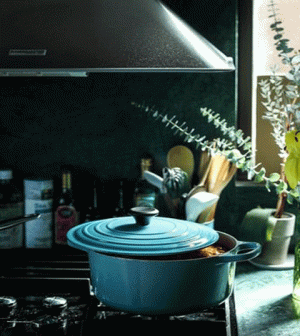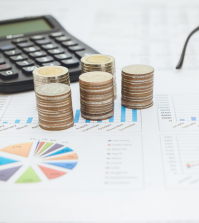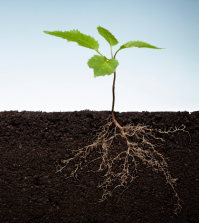- How to Avoid Common Missteps in Household Money ManagementPosted 1 day ago
- Mothering in a Fractured TimePosted 2 weeks ago
- Beneath the Surface: Revealing Life’s Goals nurtured from a Spiritual SeedPosted 2 weeks ago
- How We Kept Marital Peace while Traveling the World with Our KidsPosted 4 weeks ago
- How I Coped with Feeling Lost in a Changing SocietyPosted 4 weeks ago
- The Unexpected Liberation of a Butt DialPosted 2 months ago
Baking Bread with a Dutch Oven

By Beatriz Garcia
For thousands of years, bread was baked in a simple hole in the ground. All you needed was a fire, a container, and some dough.
Today, baking bread in a dutch oven is still a fantastic way to get bread that is perfectly crisp on the exterior and soft and chewy on the inside.
All About Dutch Ovens
Dutch ovens are one of the most versatile pieces of cookware you can own.
You can use them on any stovetop and under the broiler, and in the oven as well. Seasoned and coated with oil, they can be used to brown meat or saute vegetables.
Dutch ovens are exceptionally good at retaining heat, so they are perfect for long, slow braises.
A History of Dutch Ovens
The Dutch oven has a rich history in the US, going back to the 1600s when settlers in the American colonies first used it.
It wasn’t called a Dutch oven at first, though. This name came about in the early 18th century when Abraham Darby imported manufacturing techniques to England from Holland.
This large pot was used for cooking baked beans and stews, but soon, it would find another use: a bread oven.
Early Dutch ovens had three legs and a flat lid. This was so that it would fit comfortably in a campfire. (The legs held the oven above the coals, and the flat top made it easy to place coals on.)
Today there are more options, but it’s still possible to find the traditional style–which remains the best way of cooking over a campfire.
Dutch Ovens Today
Sorry but that steel stockpot you’ve got – no, that isn’t a Dutch oven! Still, in many kitchens, saucepans and pots have replaced Dutch ovens.
Yet the old-fashioned Dutch oven is back, thanks to an old-fashioned revival in cast-iron cookware.
The fundamentals of a Dutch oven remain the same as ever:
- Made of cast iron
- Rounded
- Flat Bottom
- A heavy lid
Using a Dutch Oven to Bake Bread
The first thing to understand when baking bread in a Dutch oven is that it’s very different from baking bread in a regular oven. In order to properly bake bread in a Dutch oven, you must first pre-heat up the pot and lid on the stove.
What size Dutch Oven?
Dutch oven sizes are normally measured in terms of their capacity in quarts.
To bake bread, I recommend a Dutch oven with a capacity of at least 4-6 quarts. This should get you a decent loaf of bread.
You might be tempted to get a bigger one. By all means, consider it, but remember cast iron is heavy. A big Dutch oven can be a lot to lug around your kitchen.
What are Dutch ovens made of?
Dutch ovens are made of cast iron. Don’t let anyone tell you differently.
Yet, there are two types of cast iron:
- “Bare” cast iron
- Enameled cast iron
Bare Cast Iron
“Bare” cast iron is fantastic. It’s cheap and highly durable. It’s something you can easily pass on to your children and grandchildren.
If you look after it.
And there’s the catch. It is more work than any other cookware material. You need to season it, keep it seasoned, and clean it very carefully.
The seasoning is essentially several layers of oil chemically fused to the iron. This protects the metal underneath and stops it rusting.
To season it, you coat it in a thin layer of oil, then heat it so that oil “smokes.” You should probably do this with the windows open!
Cleaning it is no cinch either. It can’t go in the dishwasher, and really needs to be cleaned immediately after use. No leaving it to soak. Generally, it needs to be cleaned gently, with gentle, or even no, detergents.
Enameled Cast Iron
Enameled cast iron is so much easier! While it’s not technically non-stick, food does tend to slip off the surface.
Enameled cast iron usually doesn’t need seasoning and is easier to clean.
Better yet, it often comes in a range of beautiful colors. An enameled cast iron Dutch oven is the ultimate stove to tabletop pot.
Yet there is a catch, well, two, actually. Firstly, it’s a lot more expensive than “bare” cast iron. Fair enough, right? You are paying for the extra layer of porcelain enamel over the cast iron.
The other catch is that it is more likely to chip or crack than bare cast iron. The porcelain layer is tough, but not as tough as iron. On the other hand, porcelain doesn’t rust.
So, which material you choose for your Dutch oven is very much a personal choice!
What’s this got to do with bread?
Dutch ovens are good at retention.
The thick cast iron retains heat so well that it doesn’t cool when food touches it. This provides a consistent heat to the dough.
A heavy lid helps retain the steam in the Dutch oven, keeping the crust moist, initially, and helping the bread to expand.
The end result? A fluffier loaf, with a thick chewable crust.
What next?
Has this article piqued your interest in using a Dutch oven? Well, first, why don’t you ask around the family. Perhaps someone has an old one they would be happy to pass on to you?
If not, then you need to buy one. You could start with the main source for this article, which includes a guide to purchasing Dutch ovens.
********
Feature Slider Image by Edgar Castrejon







